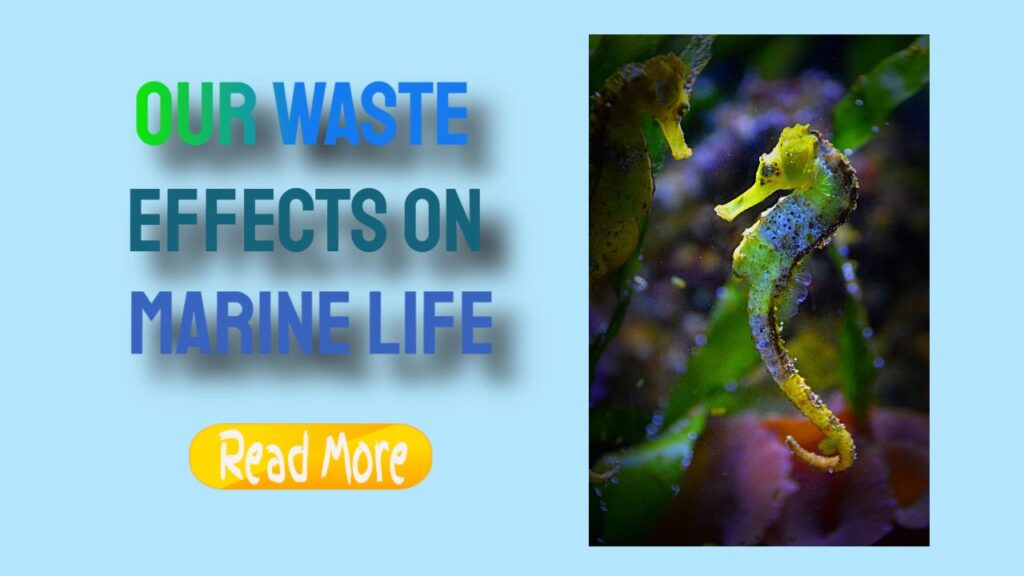Discover Vital Topics on Marine Pollution
- Comprehending the Environmental Consequences of Oil Spills
- Investigating the Health Risks Associated with Oil Spill Toxicity
- Understanding the Impact of Ocean and Coastal Acidification on Ecosystems
- Examining the Major Threats Facing Marine Environments
- Analyzing the Societal Impacts of Oil Spills
- Evaluating the Economic Ramifications of Oil Spills
- Identifying Significant Effects of Oil Spills on Marine Ecosystems
- Assessing the Impact of Oil Spills on Marine Wildlife
Comprehending the Environmental Consequences of Oil Spills
The challenge of marine pollution encompasses a wide range of factors, including harmful chemical, industrial, and agricultural contaminants that have become alarmingly frequent in recent years. This issue has manifested through various incidents, such as devastating oil spills, untreated sewage discharges, and the introduction of invasive species. Consequently, scientists and environmental advocates are increasingly concerned about the severe effects of these pollutants, which threaten not only the delicate balance of our ecosystems but also human health. Continuous monitoring initiatives have been put in place to accurately quantify levels of chemical and plastic pollution in our oceans. These efforts utilize diverse methodologies to track and assess pollutant discharges stemming from land-based activities, including oil spills. Projects like Horizon 2020 are dedicated to fostering a healthier Mediterranean ecosystem by identifying pollution sources and advocating for sustainable practices in marine conservation.
Research on marine pollution predominantly focuses on its impacts on biodiversity, the associated risks to human health, and the overall quality of marine experiences. This comprehensive analysis delves into the intricate interplay among these categories, highlighting their significance. While some seabird populations face adverse effects from oil exposure and other pollutants, overall stocks of marine species have not shown significant declines attributable to pollution alone. Instead, factors such as reproductive success and population dynamics are often more heavily influenced by external variables like climate and habitat changes. Interestingly, even in highly polluted regions like the North Sea, fish populations—such as cod and haddock—have experienced growth over the decades, demonstrating resilience despite environmental challenges.
Deep-sea mining activities contribute significantly to marine pollution, as operations extract valuable minerals such as silver, gold, and copper from the ocean floor. These mining practices generate sulphide deposits at considerable depths, potentially releasing harmful substances that exacerbate ocean toxicity. While scientific research is ongoing to fully understand the environmental ramifications of deep-sea mining, it is evident that these operations pose substantial risks to marine ecosystems, often causing irreversible damage and increasing the likelihood of oil spills and contamination.
Investigating the Health Risks Associated with Oil Spill Toxicity
Although oil spills are significant contributors to the problem of marine pollution, they are not the sole offenders. Other critical sources of oceanic pollution include the discharges and runoff from urban and agricultural areas. Each year, millions of pounds of untreated waste—including sewage and hazardous materials—are released into rivers, ultimately reaching the ocean. Industrial processes and agricultural runoff exacerbate this issue further, introducing a variety of hazardous chemicals and pollutants into our waterways. The cumulative effect of these pollutants poses severe risks not only to marine ecosystems but also to human health, necessitating urgent attention and action.
Ship-based pollution remains a major source of maritime contamination, particularly due to oil spills. The presence of crude oil, which can persist in ocean waters for years, poses a high toxicity risk to marine organisms, leading to suffocation when they become trapped in oil. The clean-up process following oil spills is notoriously challenging, further complicating the recovery of affected marine environments. The extent of damage inflicted by oil is influenced by various factors, including the type of oil involved, its viscosity, and the effectiveness of clean-up measures implemented. For example, lighter oils may impact marsh vegetation differently than heavier crude oils, each type presenting unique recovery challenges. Researchers are actively engaged in exploring the ecotoxicology of marine pollutants to gain a deeper understanding of their impacts on both human and environmental health.
Ultimate Secrets To Saltwater Fish And Invertebrates
Understanding the Impact of Ocean and Coastal Acidification on Ecosystems
Consider the immense diversity of life that thrives in our oceans. The rising levels of acidity in marine environments can dramatically alter the dynamics of various plant and animal species, often yielding unpredictable outcomes. While certain organisms, such as seagrasses, may flourish with increased levels of dissolved carbon dioxide, others—like oysters—may struggle significantly as their larvae fail to survive in more acidic conditions. Thus, ocean and coastal acidification is likely to result in substantial shifts within entire ecosystems, affecting species abundance and the nature of their interactions.
It is estimated that approximately 80% of marine pollution originates from land-based activities, largely due to the increasing pressures of growing coastal populations. Nutrient pollution, primarily from agricultural runoff and sewage, overwhelms marine environments with excessive nitrogen and phosphorus, leading to harmful algal blooms. The subsequent decay of these blooms depletes oxygen levels, creating hypoxic zones where marine life cannot survive. As the ocean—covering 71% of our planet—continues to absorb greenhouse gases and experiences rising temperatures, significant disruptions occur within the delicate balance of marine and coastal ecosystems. Additionally, melting ice caps and altered ocean currents are further contributing to these ongoing environmental changes.
Plastic pollution has emerged as a critical concern in coastal and marine ecosystems worldwide. The continuous influx of plastic waste disrupts the structure and function of these ecosystems, posing both direct and indirect threats to marine life. Sources of plastic pollution are diverse, stemming from both land-based and ocean-based activities, and manifest in various forms such as metaplastic, macroplastics, mesoplastics, and microplastics. Understanding the implications of plastic pollution is essential for developing effective strategies aimed at mitigating its impacts on marine environments.
Examining the Major Threats Facing Marine Environments
Antimicrobial resistance (AMR) has likely existed within marine microbial communities for millennia; however, its prevalence has surged in recent years, particularly in coastal waters. This increase is believed to correlate with the rising introduction of pollutants and pathogens from land-based sources into marine environments. The detrimental effects of plastic litter on marine ecosystems have been extensively documented, demonstrating that many marine species face significant threats from plastic waste, which can jeopardize their survival, particularly since numerous species are already vulnerable due to other human-induced pressures.
Marine animals frequently suffer from entanglement and ingestion of plastic debris, resulting in severe health issues and population declines. Lesser-known threats include the indirect consequences of plastic waste on invasive species and the potential for harmful chemicals—such as polychlorinated biphenyls—to enter the food chain. The socio-economic impacts of marine litter are intricate and interwoven, presenting challenges for management and mitigation strategies. Research on ghost fishing, for instance, highlights the economic losses associated with lost fishing gear, illustrating the broader implications of marine pollution on livelihoods and coastal economies.
Analyzing the Societal Impacts of Oil Spills
The escalating pollution of our oceans due to human activities is undermining the sustainability of marine ecosystems, leading to far-reaching societal consequences. Advanced monitoring technologies, including airborne and spaceborne sensors, have been employed to provide comprehensive insights into major marine pollutants such as oil spills, chemical discharges, and algal blooms. However, the complexities of evaluating these pollutants arise from their dynamic nature and the limitations of existing data regarding their specific characteristics and impacts, particularly in optically shallow waters.
Significant oil spill incidents, such as the Exxon Valdez and Deepwater Horizon disasters, have left indelible scars on marine environments and surrounding communities. The Torrey Canyon spill in 1967 is recognized as one of the first major oil disasters, releasing an estimated 25-36 million gallons of crude oil off the coast of Cornwall, England, and severely affecting coastlines in both the UK and France. The Deepwater Horizon spill, which originated from the seabed, had catastrophic effects on the Gulf Coast’s ecosystem, impacting marine life at all levels. In incidents of marine oil spills, fish and other marine organisms are often the first to be adversely affected, facing exposure to toxic oil components that can lead to long-term health issues and reproductive challenges.
Evaluating the Economic Ramifications of Oil Spills
Estuaries, often situated near petrochemical industries, are particularly vulnerable to oil exposure due to transport activities via ships and pipelines. Oil spills can inflict severe damage on vital intertidal habitats, including salt marshes and mangroves, leading to lasting ecological consequences. The entanglement of marine animals in debris and their accidental ingestion of harmful materials further exacerbate the risks posed by oil spills, affecting species such as seabirds, turtles, and marine mammals.
Oil plays a pivotal role in the modern economy, serving as a readily available energy source and a raw material for plastics. The impacts of oil and gas exploration and production are multifaceted, affecting ecosystems at every stage—from exploration to extraction and eventual combustion. In the North Sea, it is estimated that offshore activities contribute to 29% of the total oil input into marine environments, underscoring the ongoing risks associated with oil production and its long-term consequences for both marine life and economic stability.
Identifying Significant Effects of Oil Spills on Marine Ecosystems
Despite advancements in environmental regulations, oil spills continue to pose a considerable threat to marine ecosystems. While most oil spills are relatively small, collectively they contribute to a significant amount of oil entering marine environments, with over 5.65 million tonnes released due to tanker spills between 1970 and 2009. The environmental risks linked to offshore oil production are profound, as massive spills can inflict catastrophic impacts on marine wildlife and coastal communities.
The Deepwater Horizon blowout in 2010 serves as a powerful reminder of the potential devastation caused by offshore drilling accidents. While natural disturbances often allow ecosystems to recover, oil spills introduce persistent contaminants that can disrupt marine life for generations. Larger marine mammals and seabirds are especially vulnerable to both the immediate and long-term health impacts of oil exposure, which can result in physiological changes, immune system issues, and reproductive failures.
Many coastal and marine ecosystems have adapted to withstand natural disturbances, creating opportunities for new organisms to flourish. However, oil spills introduce a level of disruption that can severely hinder these natural recovery processes. Understanding and supporting the natural restoration mechanisms of affected ecosystems is crucial for mitigating the long-term effects of oil spills and fostering resilient marine environments.
Assessing the Impact of Oil Spills on Marine Wildlife
Oil and gas exploration activities present various challenges for marine ecosystems, primarily through oil spills and associated noise pollution. Each year, thousands of oil spills occur in the United States alone, resulting in severe damage to marine habitats and wildlife. The consequences of these oil spills can last for decades, and cleanup efforts often only manage to remove a fraction of the oil while sometimes introducing additional harmful chemicals that exacerbate the situation. Marine mammals, such as dolphins and whales, face heightened health risks when exposed to oil and toxic substances resulting from drilling operations.
The impact of marine debris, often referred to as “plastic trash,” is also a significant concern. Millions of Americans enjoy coastal activities, often unaware of how their everyday actions contribute to marine pollution. Marine litter threatens the ecological integrity of coral reefs and other critical habitats, resulting in declines in biodiversity and disrupting essential ecological functions. All species of sea turtles and over half of recognized marine mammal species are negatively impacted by marine litter, leading to entanglement, ingestion, and potential toxicity from chemicals leaching from plastics.
The Ocean Conservancy estimates that plastic pollution affects over 690 species of marine life, highlighting the urgent need for innovative solutions to address this crisis. Some businesses are exploring alternatives to traditional plastic products, such as edible six-pack rings made from leftover brewing materials. The lack of comprehensive scientific data on marine plastic pollution, despite its widespread acknowledgment, underscores the necessity for ongoing research and public awareness efforts to tackle this pressing issue.
Coastal regions are increasingly influenced by human activities, with marine pollution and climate change emerging as key challenges for these environments. Understanding the cumulative effects of these pressures is crucial for effective coastal zone management and the development of proactive strategies to mitigate environmental risks. Ultimately, the responsibility lies with each individual to contribute to the preservation of our oceans, ensuring they remain healthy and vibrant for future generations.
The Article Impact of Waste on Marine Life Was Found On https://limitsofstrategy.com



It’s fascinating to see how multifaceted the topic of marine pollution is! One aspect that really resonates with me is the societal impact of oil spills. I recently read about how communities dependent on fishing and tourism can suffer long-term economic consequences after such an event. It’s heartbreaking to consider how livelihoods are disrupted for generations, not just from the immediate effects, but from the ongoing stigma and safety concerns surrounding tainted waters.
You’re spot on about the multifaceted nature of marine pollution. The societal impact of oil spills is often overshadowed by the immediate environmental damage, but the long-term effects you mentioned can persist for decades. I’ve read stories about communities that have struggled to recover their fishing industries, and it’s really disheartening to see how stigma affects both businesses and personal identities.
You raise such an important point about the societal impact of oil spills. It’s true that the immediate environmental damage tends to command the spotlight, while the human stories often get lost in the shuffle. The long-term recovery of communities can feel like an uphill battle, and the stigma surrounding tainted industries adds a layer of complexity that’s tough to navigate.
You’ve really captured the heart of the issue. It’s so easy to overlook the human side of environmental disasters like oil spills, especially when the headlines focus on immediate ecological impact. The ripple effects on communities can be profound and long-lasting.
You’re spot on about the far-reaching effects of oil spills on communities. It’s not just about the immediate disaster; it’s the ripple effect that often goes unnoticed. The economic strain on fishing and tourism can linger for years, long after the news cameras have moved on.